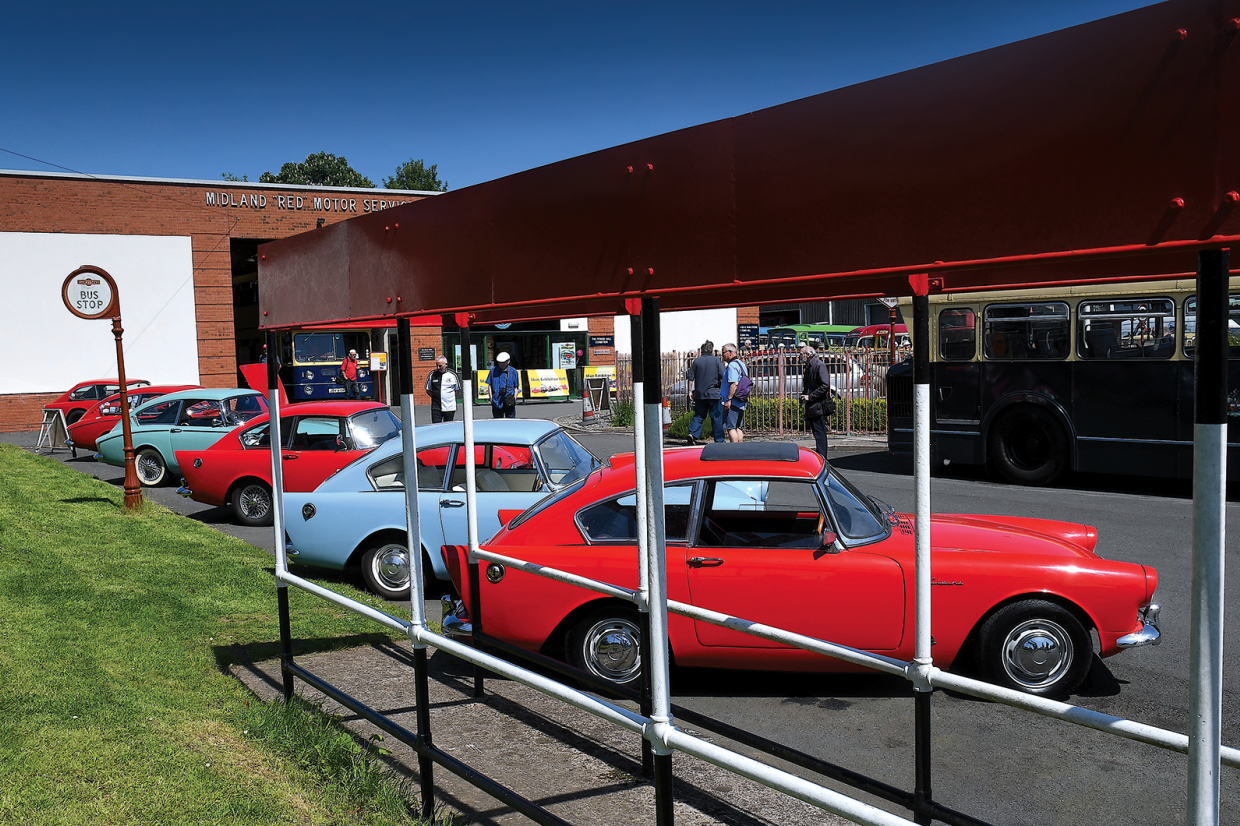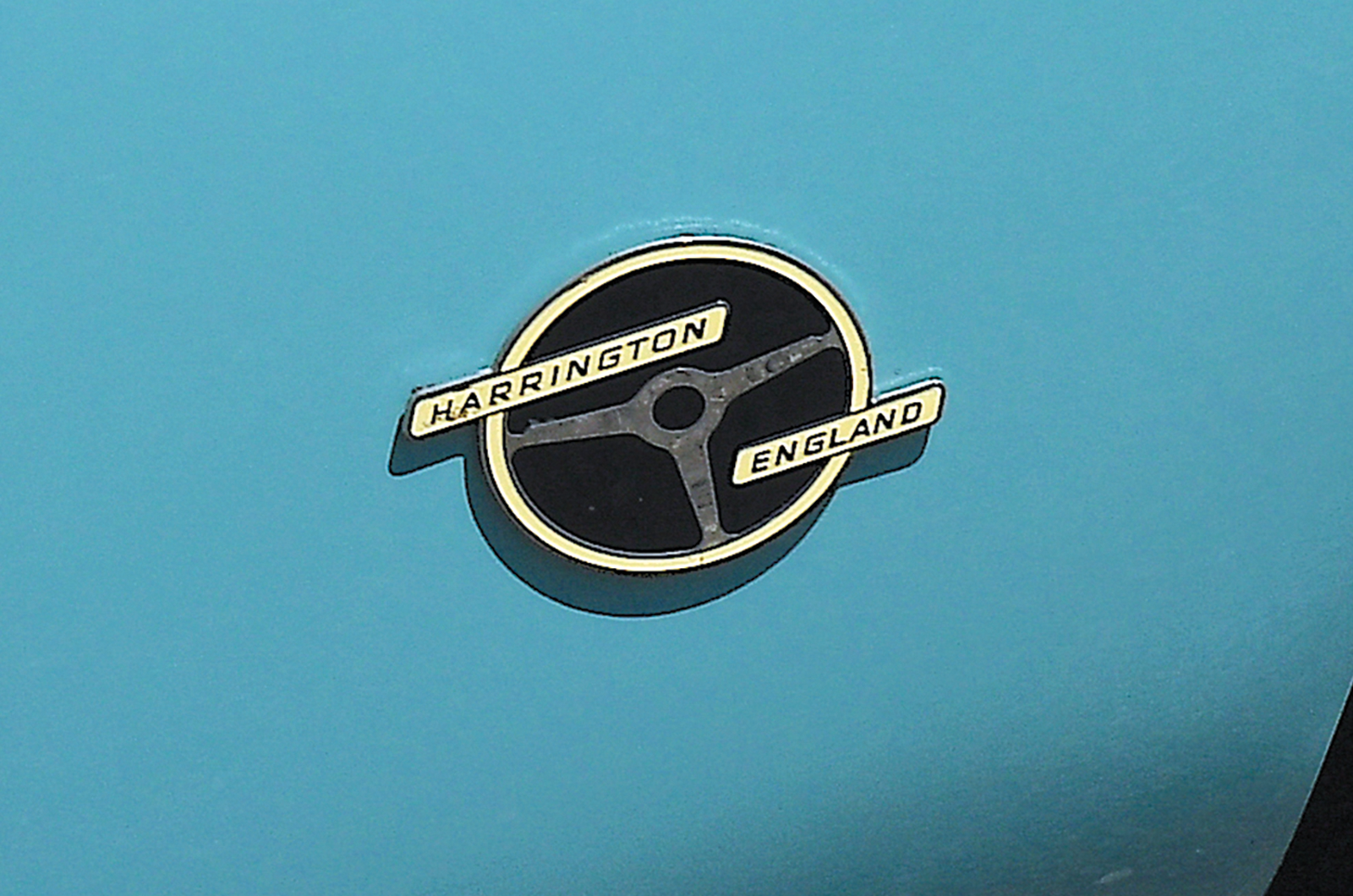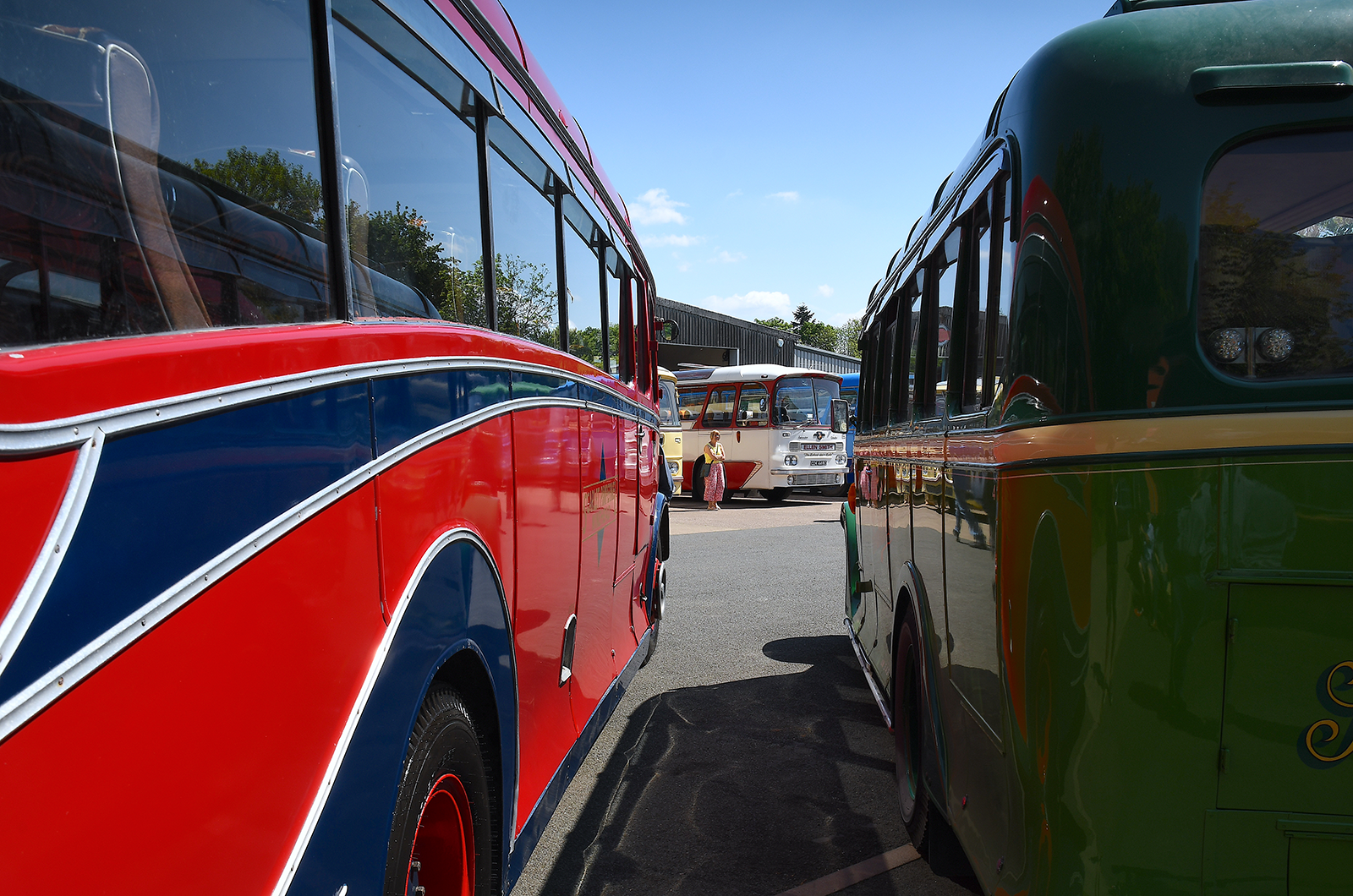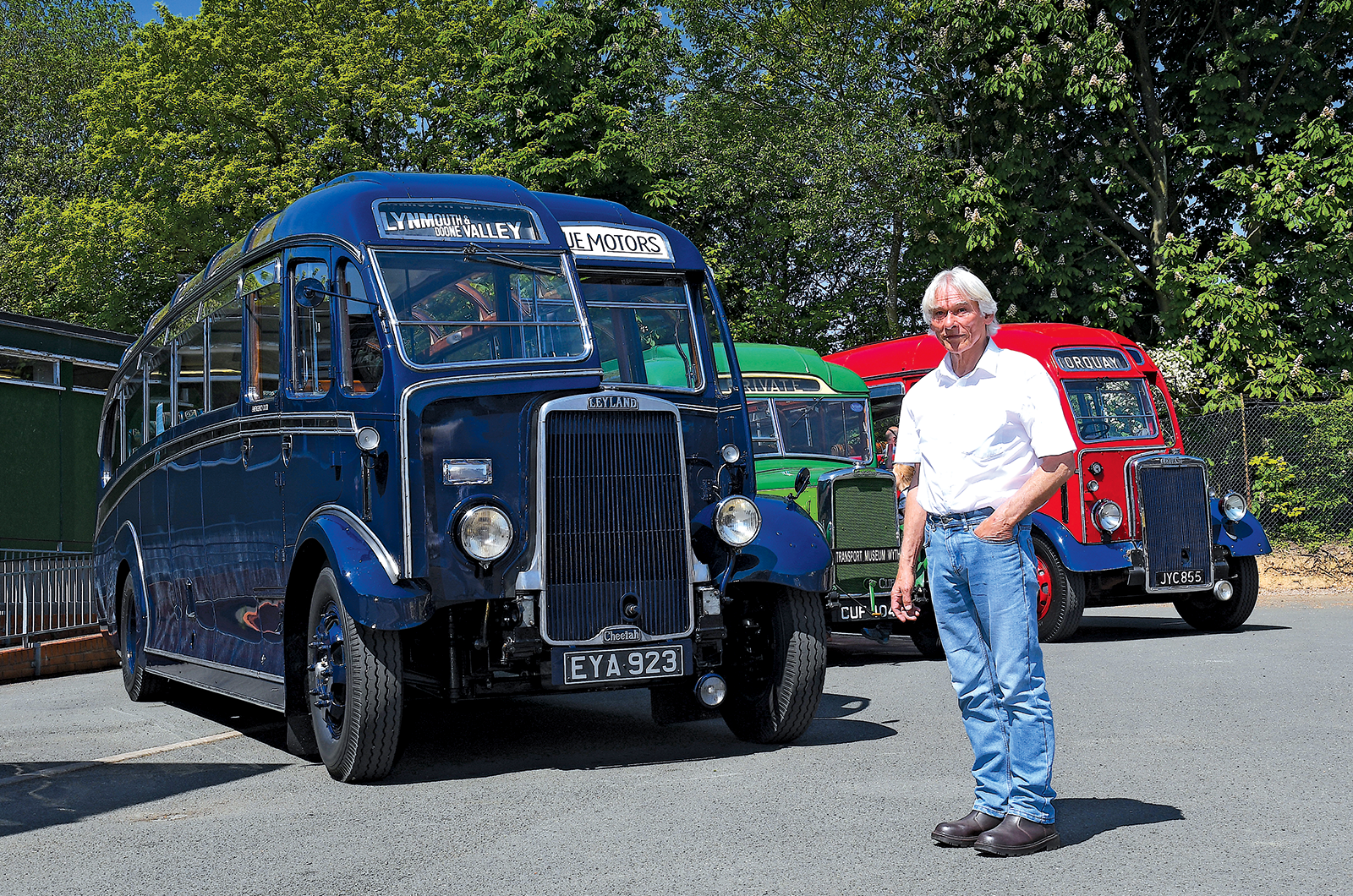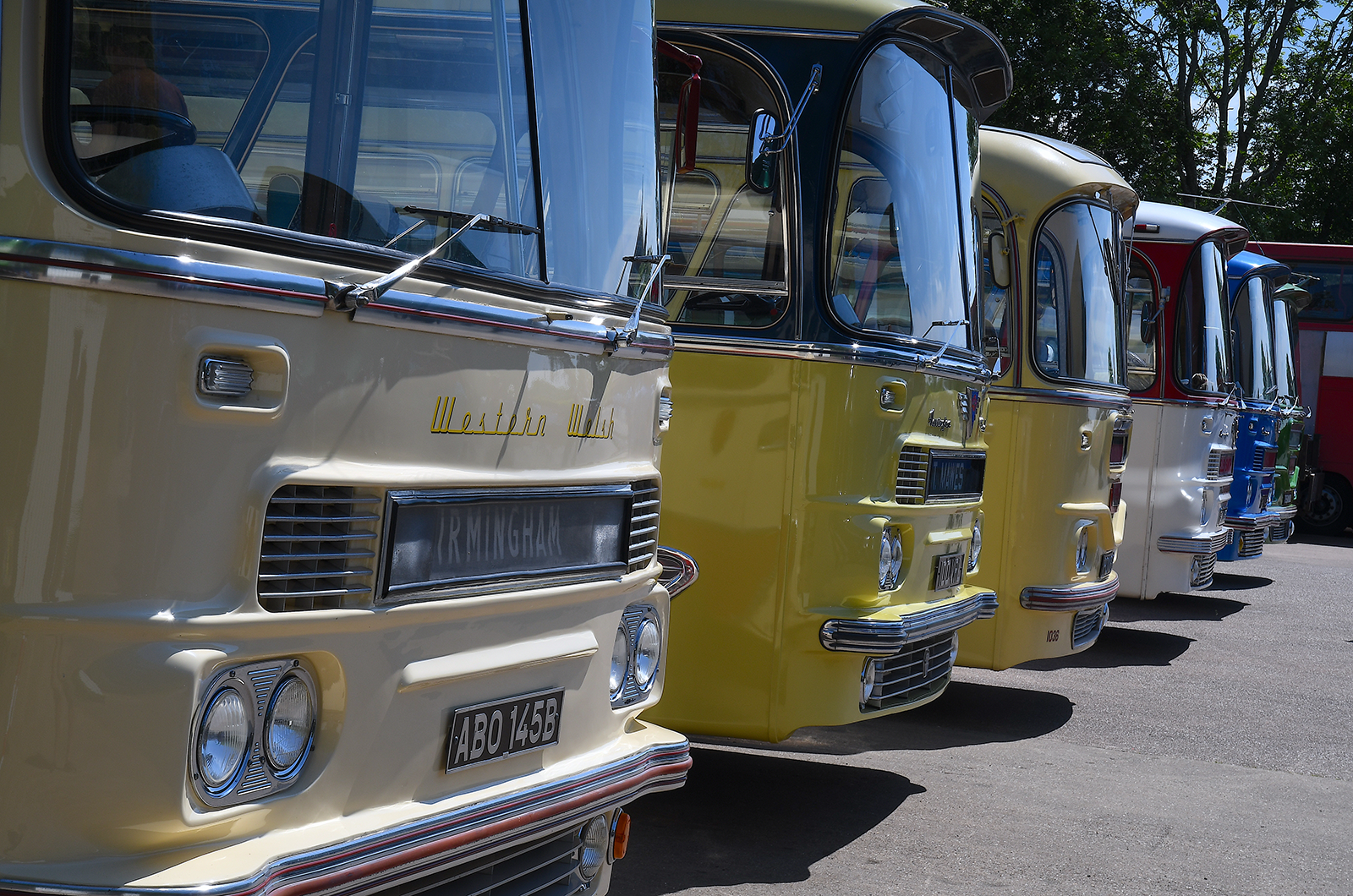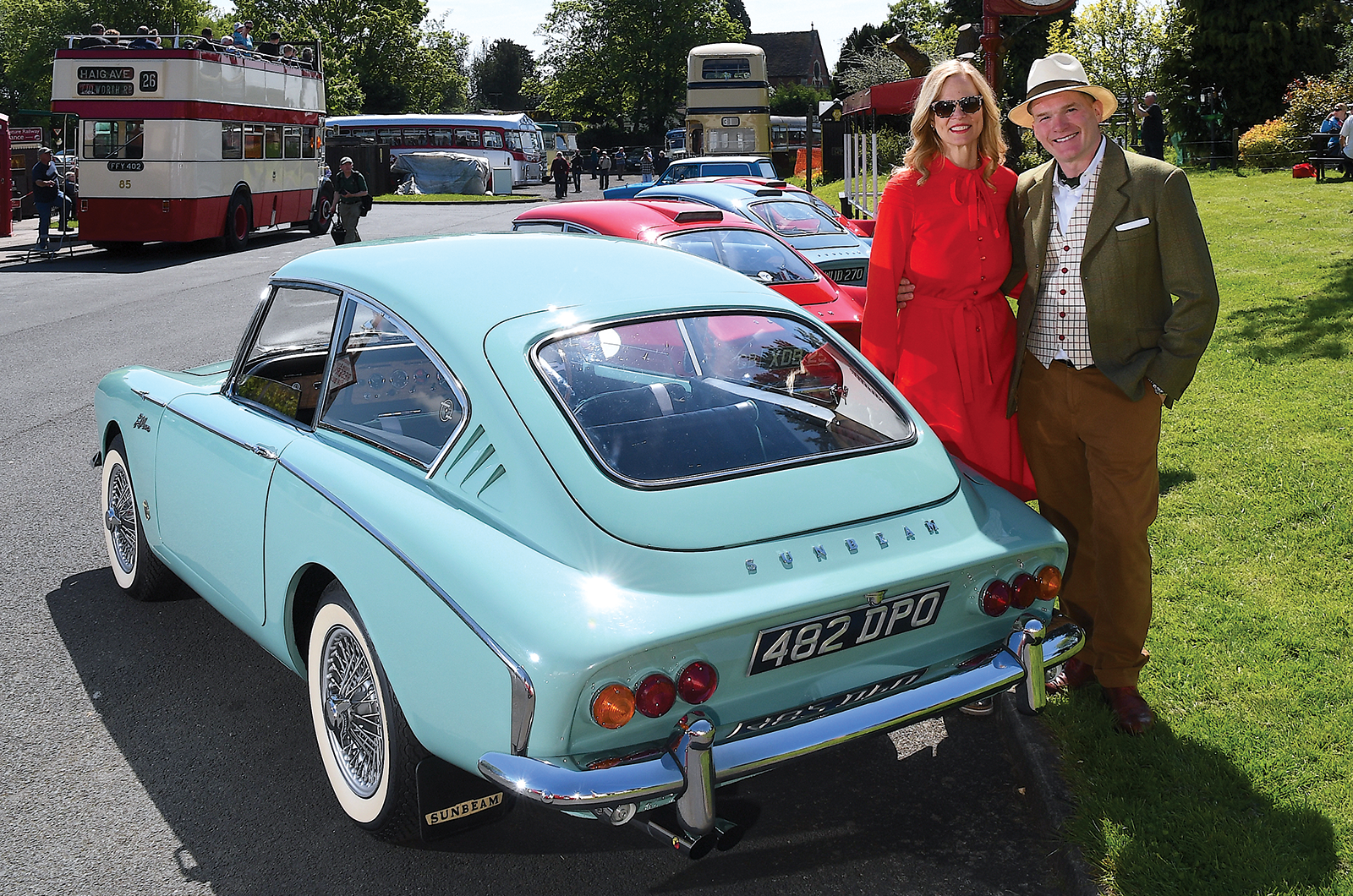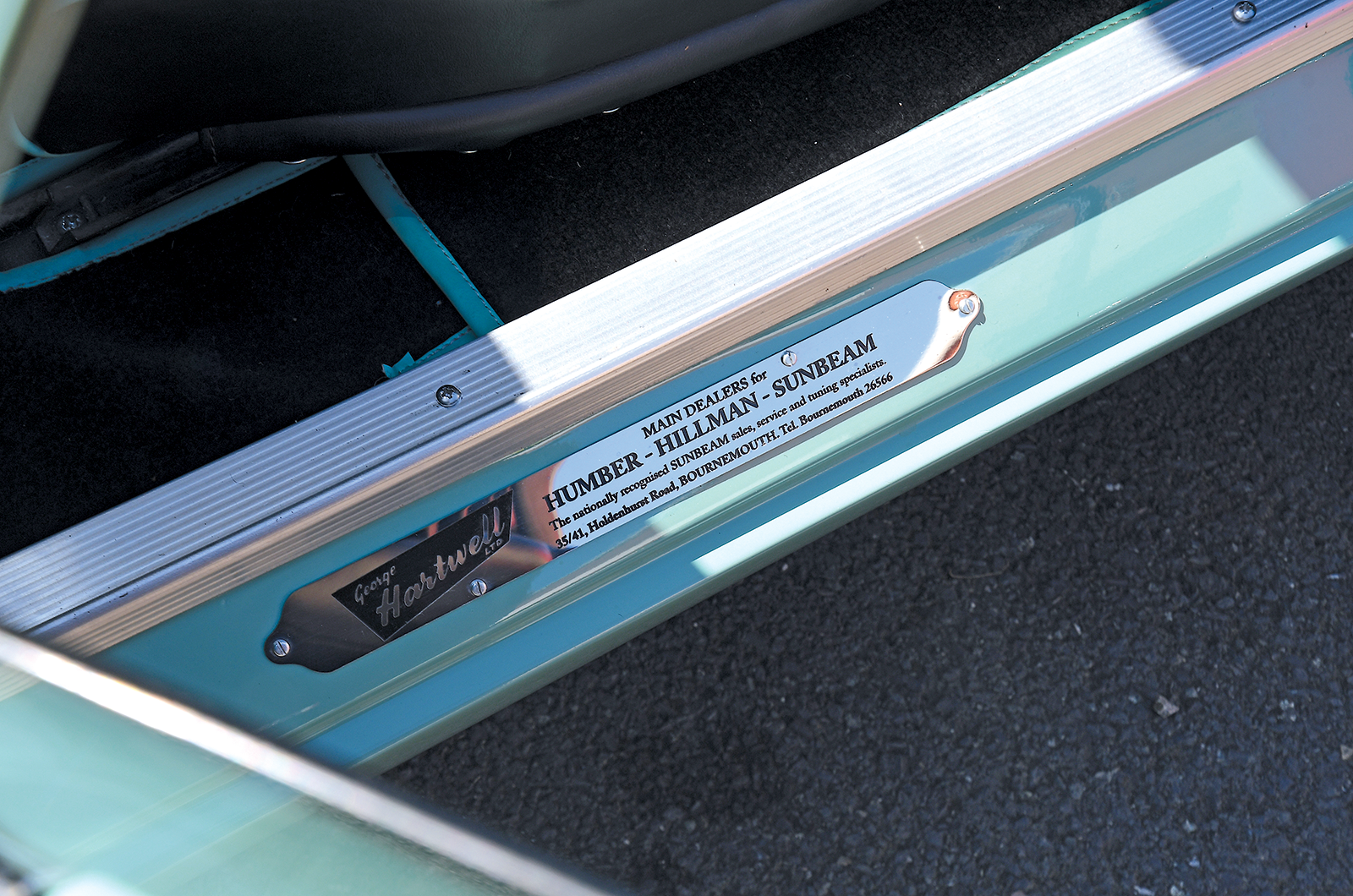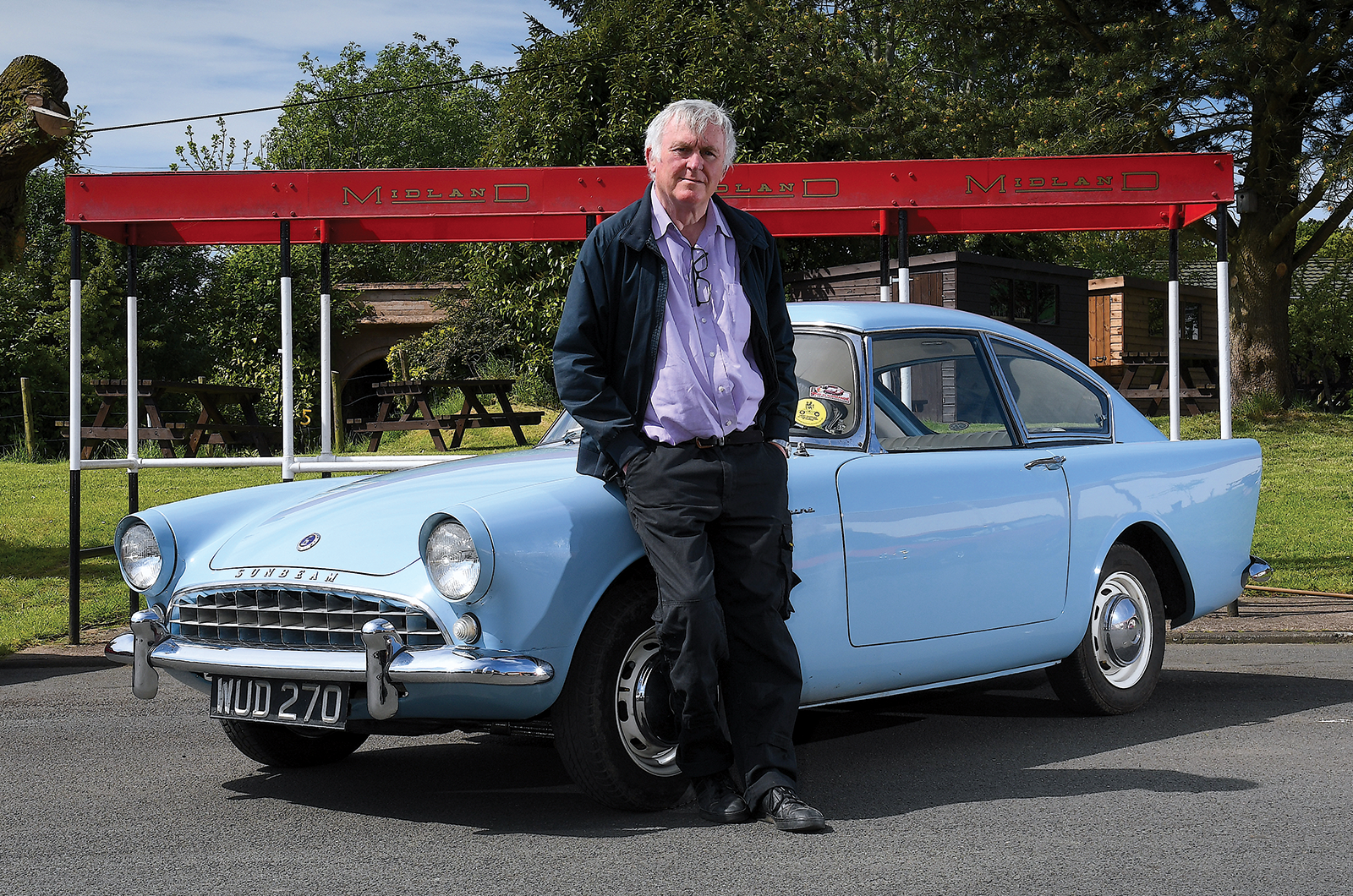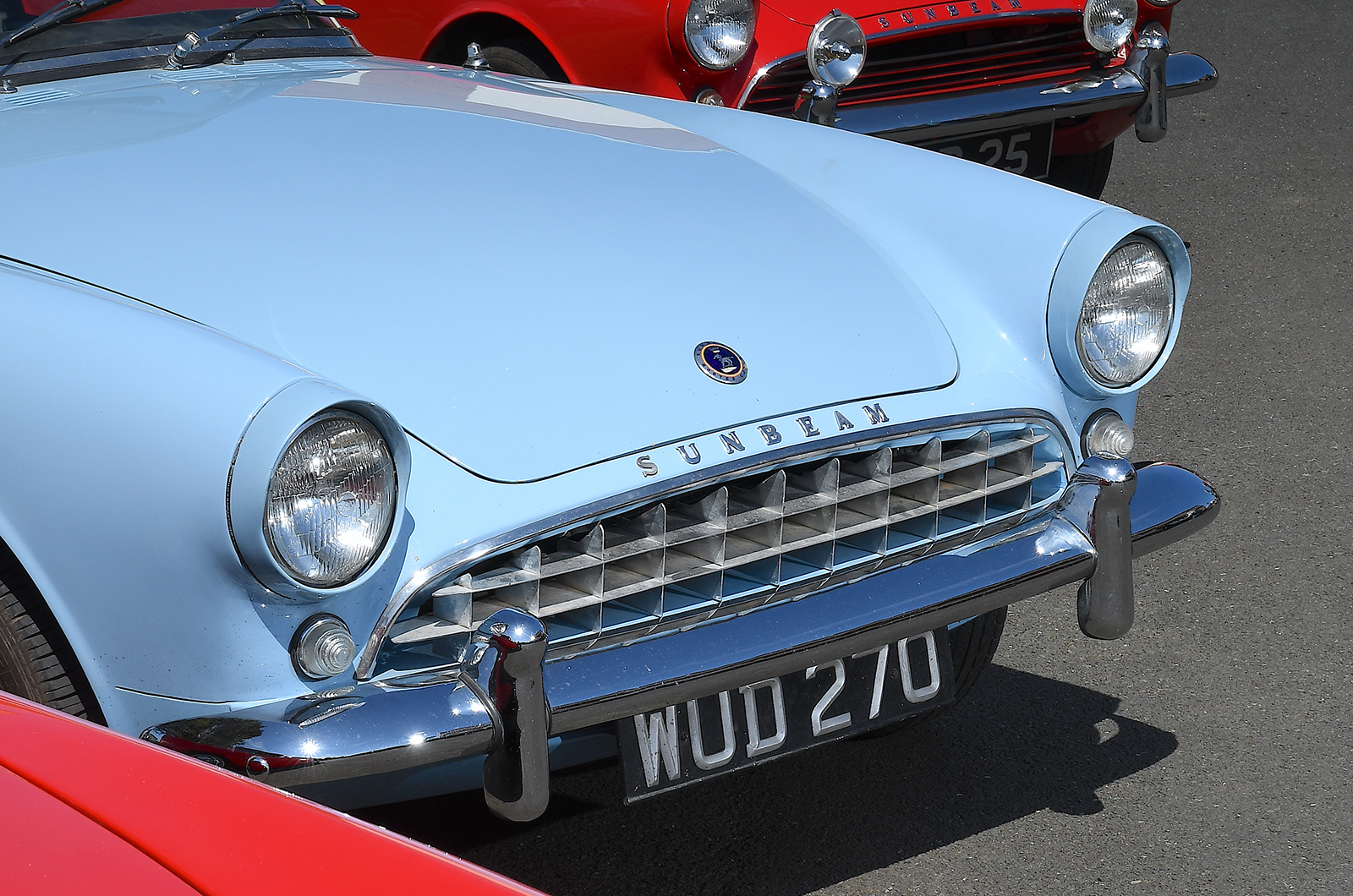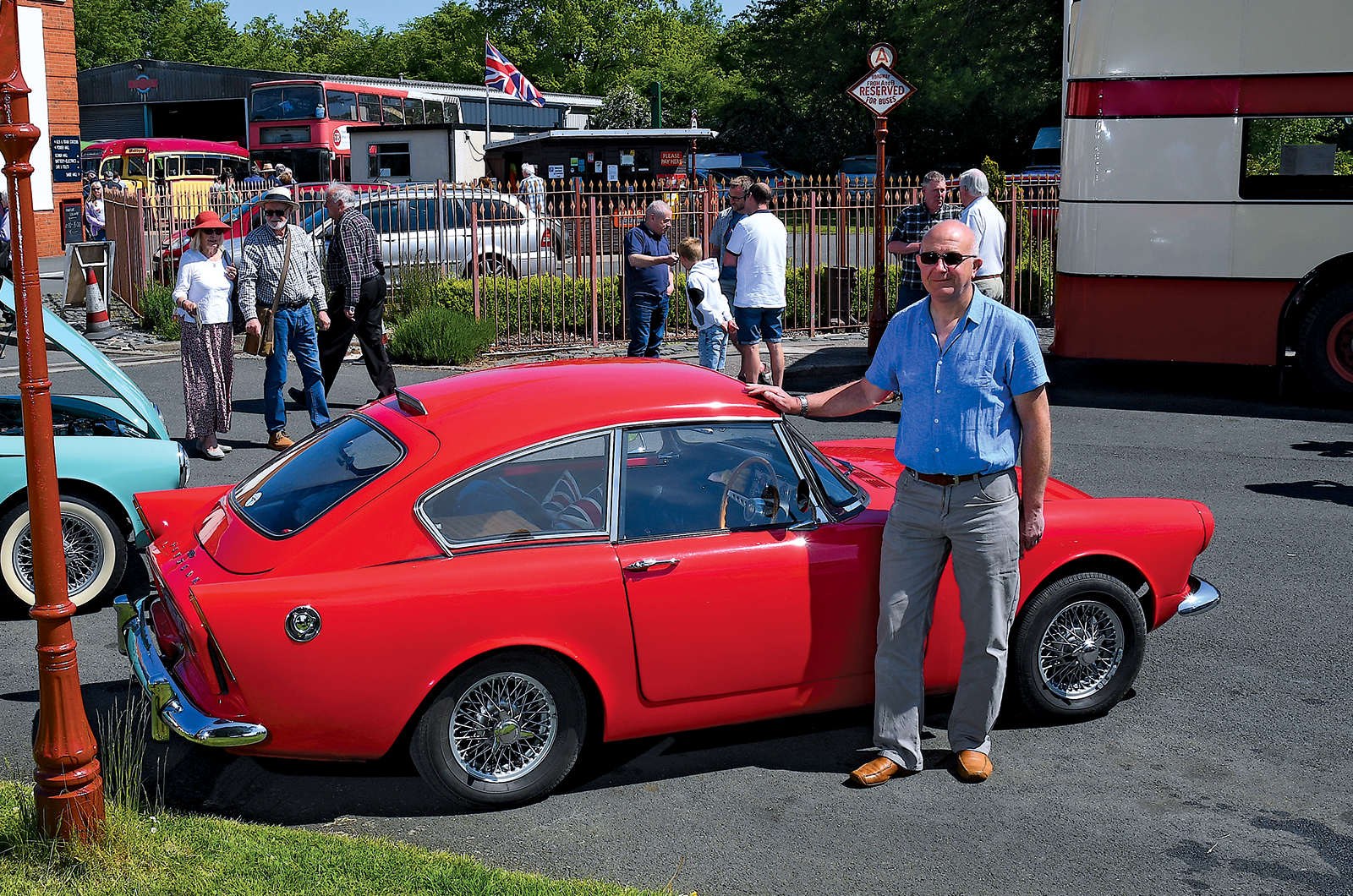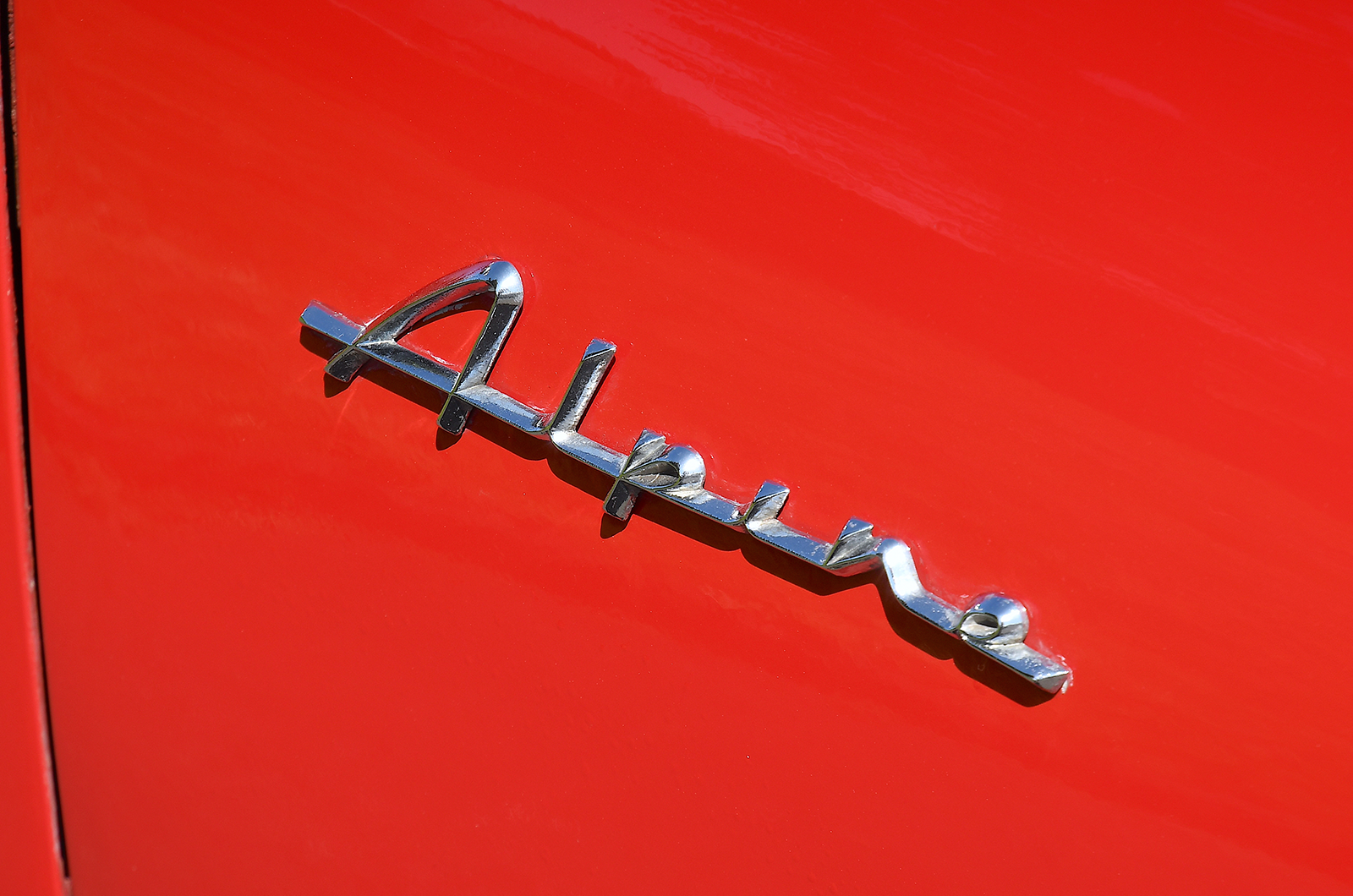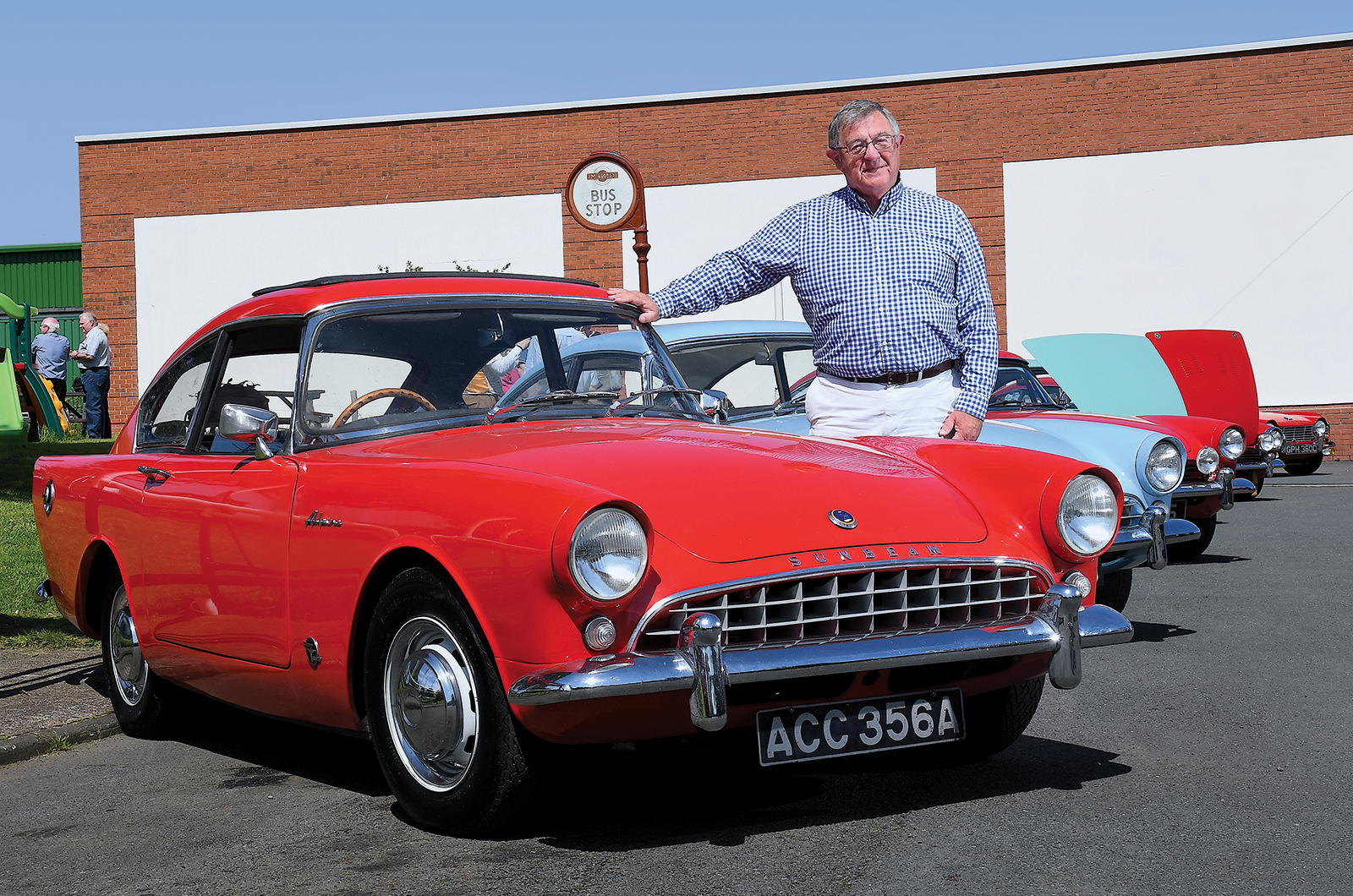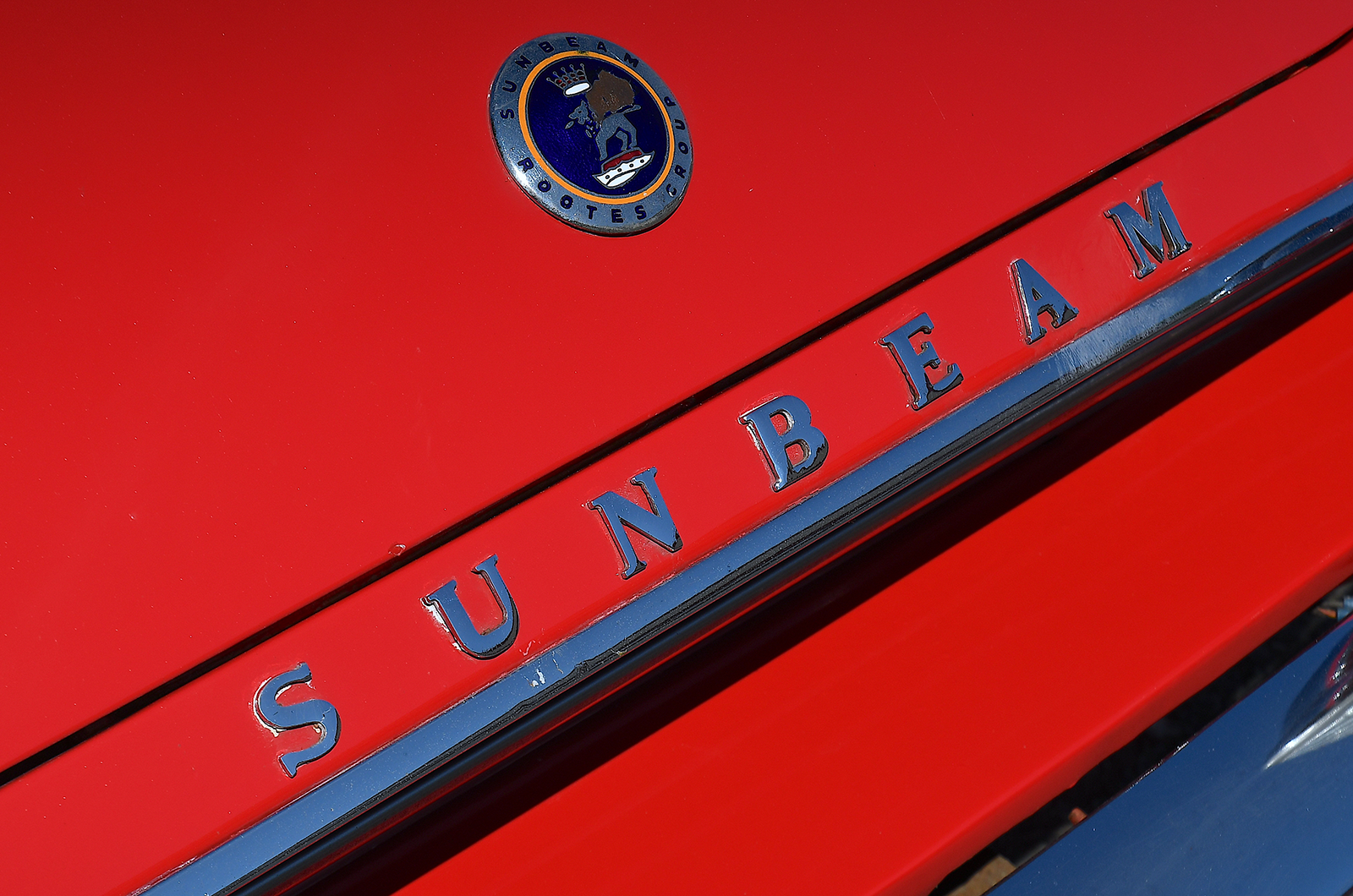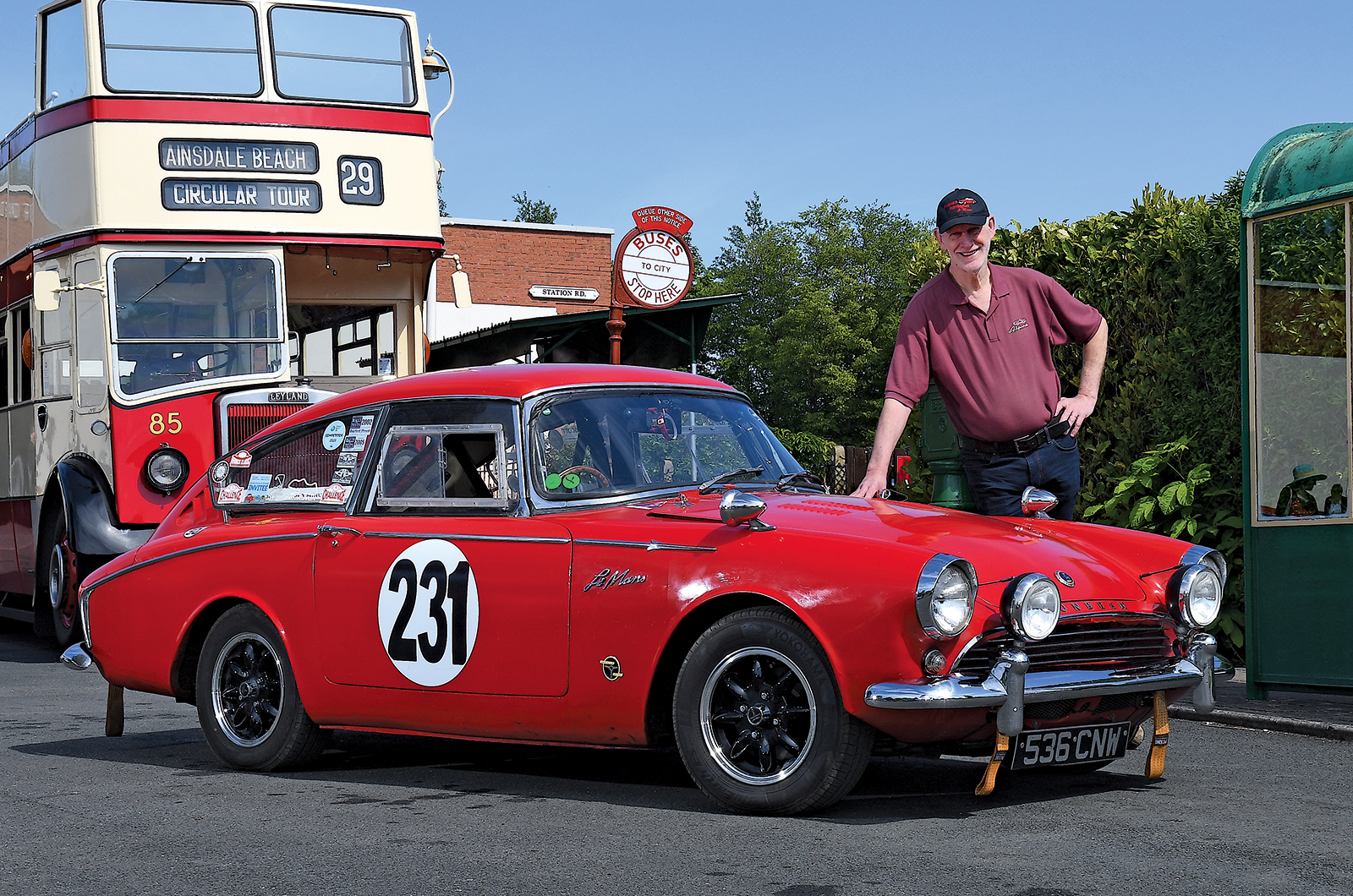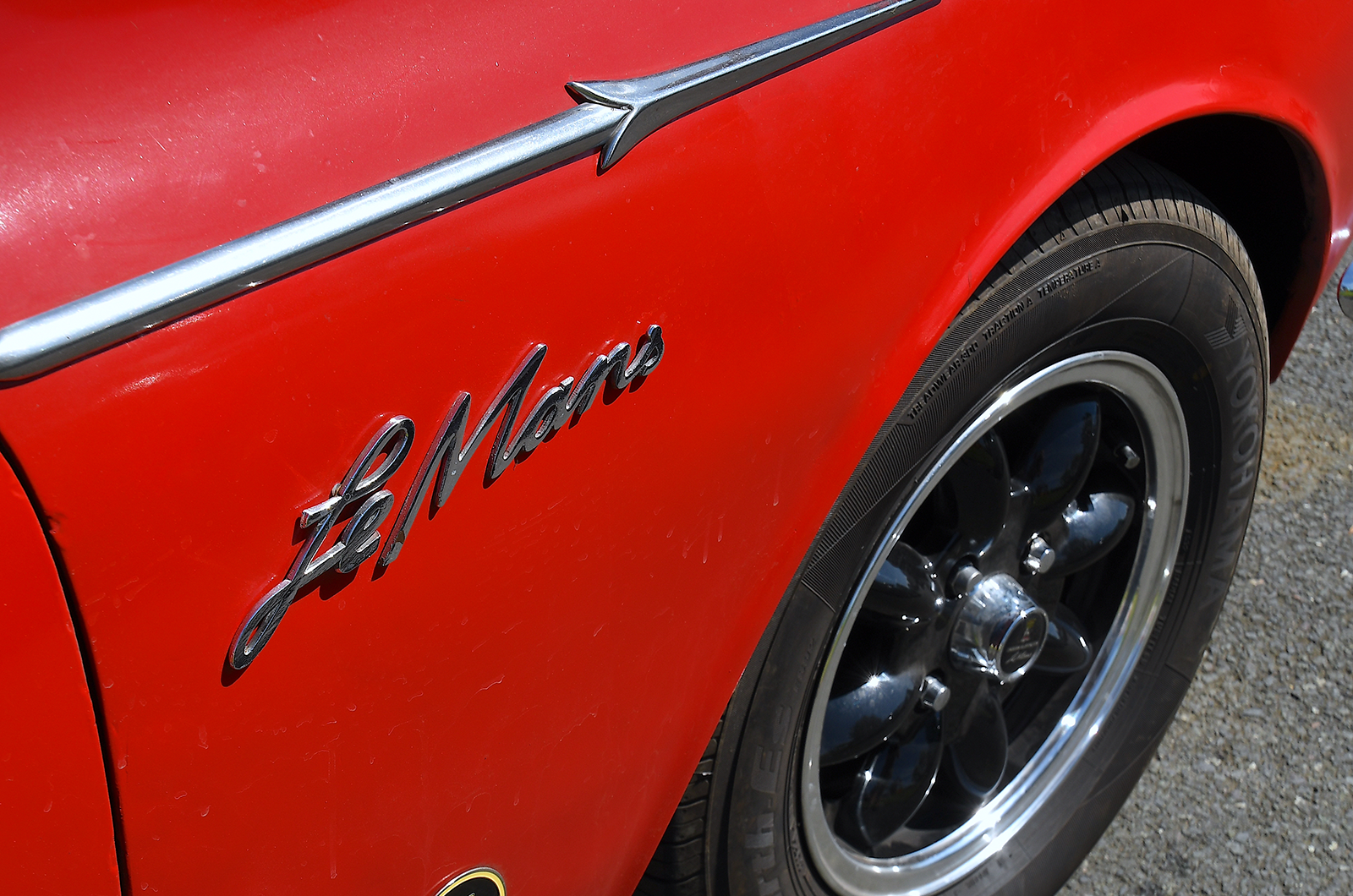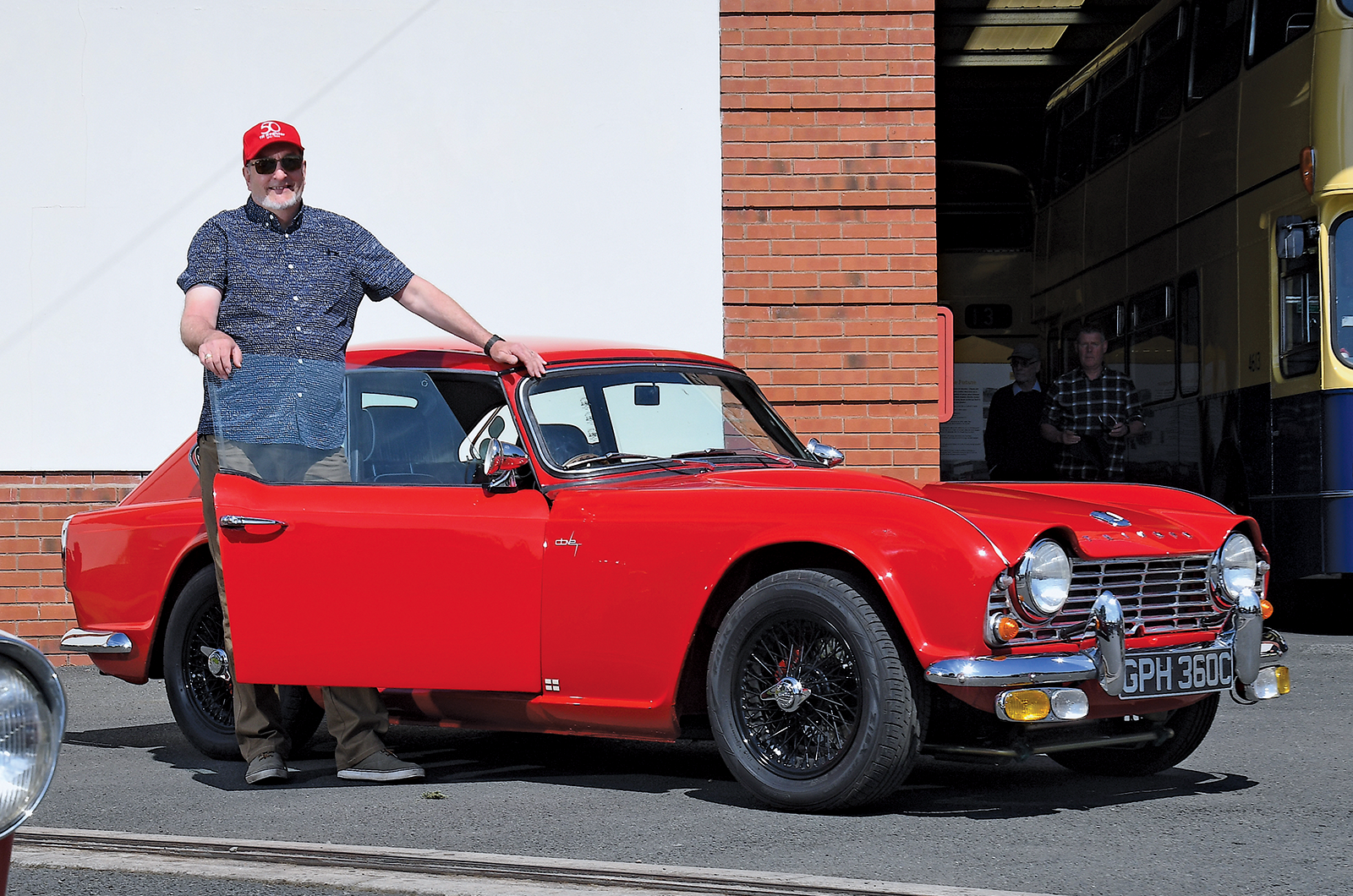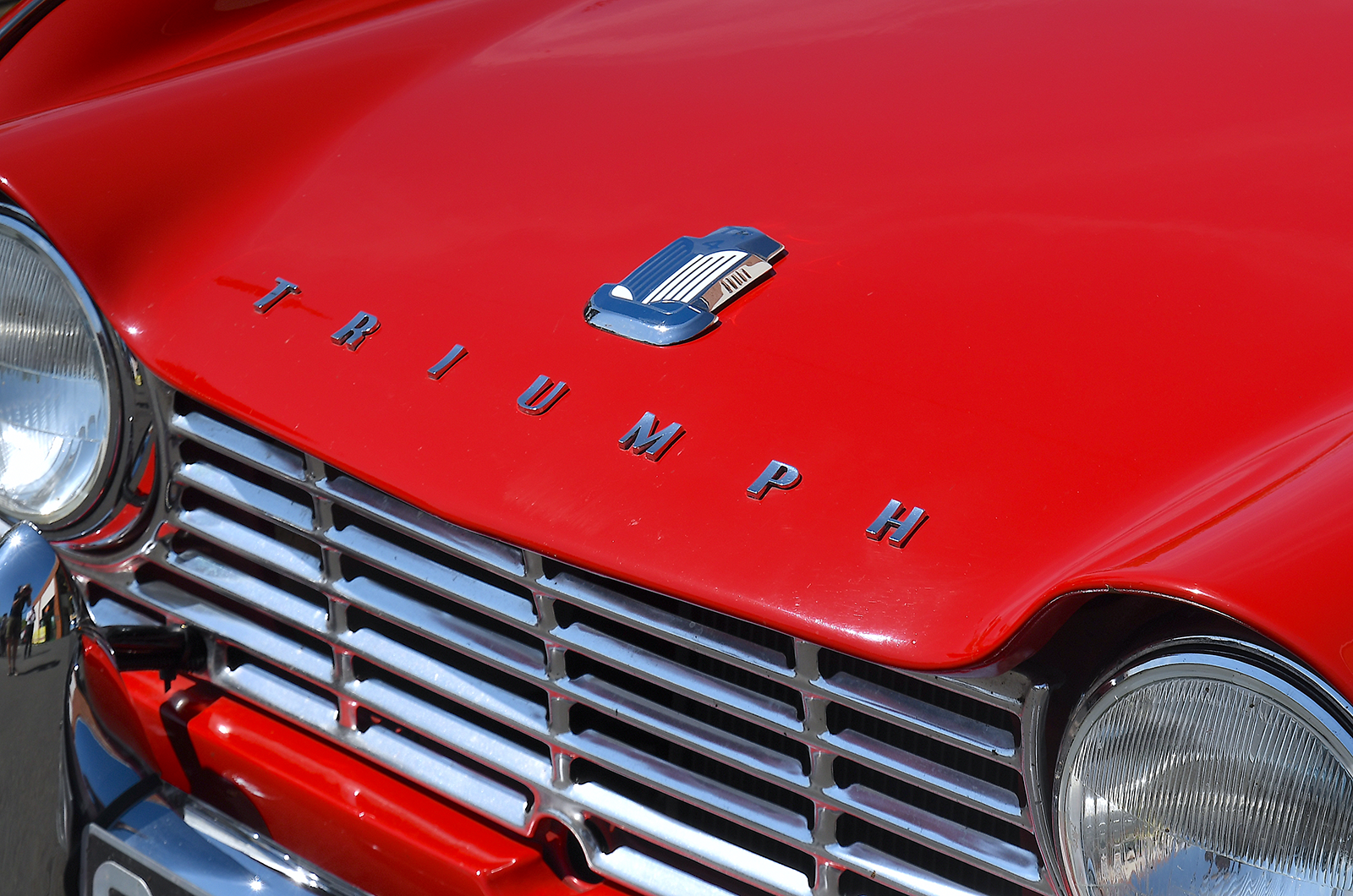“I do a few thousand miles a year in it.
“It’s better to use it; the quickest way to let a car deteriorate is not to drive it.”
Glenn Brackenridge: 1962 Sunbeam Harrington Le Mans
This Sunbeam Harrington Le Mans has been built for competition
Most Harrington Alpines have by now been restored, but long-time Sunbeam Alpine enthusiast Glenn Brackenridge hasn’t allowed his Le Mans a retirement from a long race career, with the car still competing to this day.
“A previous owner started rallying it in the 1980s, and by the ’90s he’d had it professionally prepared.
“He competed in the Rallye Monte-Carlo Historique five times,” says Glenn.
“Then it was owned by a consortium who took it on Rally of the Tests five times, coming second one year.
“So it’s probably done more competition miles than any other Sunbeam.”
As member number eight of the Sunbeam Alpine Owners’ Club, Glenn figured he was well placed to take on the Le Mans when it came up for sale, in a condition he describes as “trashed”.
Others weren’t interested in a car so thoroughly modified, but Glenn already had plans to compete and considered it a time-saver.
Some Alpine parts are being remanufactured, making maintenance easier
“Truthfully, it is a better rally car than race car, because of its weight,” he explains, “so I never trouble the leaders, but I enjoy improving my own lap times.
“I do all my own maintenance, so it’s satisfying to finish a race when others who have spent a lot more preparing their cars drop out.”
As one of the SAOC’s leading figures, Glenn has witnessed the cars becoming harder to maintain for a period, particularly lamenting Peugeot’s destruction of the model’s tooling in the 1970s, but parts are now being remanufactured as the cars have become more valuable again.
“The Tiger community has helped with that,” he adds. “We’ve benefited from the shared parts they have started remaking.
“It also helps that the engine lived on in the Hunter, right up to the 2000s in Iran. We’ve had people bring back units from there.”
Gary Scott: 1964 Triumph GTR4 Dové
Harrington turned its attention to the Triumph TR4 after it stopped producing Sunbeam-based models
Harrington Alpine and Le Mans production stopped in 1963 after 384 of all types had been built, but a few car projects were on the go before the firm closed in 1966.
One Harrington Tiger and three Daimler SP250s were made, both closed-roof versions of standard cars, and Harrington signed up to build hardtop Triumph TR4s for Wimbledon dealer LF Dove & Co, creating the Triumph GTR4 Dové (the accent was a marketing move from the Hyacinth Bucket school of social one-upmanship).
It proved a moderate success despite a price-tag of £1250, when a standard car was £968, with 50-55 cars built.
“It’s my second Triumph,” says Gary. “I had a TR6 before it.
“I saw this for sale and didn’t know anything about them, but I had young children and realised that I could get a couple of small kids in the back seat and a pushchair in the boot, so I bought it.
“The car was a wreck; you’d have skipped it if it were a standard TR4, but all the Harrrington bits were good.
“That was the important thing.”
Gary Scott’s GTR4 Dové was restored in the 1980s
Gary spent three years restoring the car after he bought it, finishing in 1987.
He later discovered that it was the last GTR4 Dové built, and therefore probably the last car produced by Harrington.
As well as the roof and 2+2 seating, the GTR4 gained standard overdrive, an 18-gallon fuel tank and an engine tuned by Laystall Engineering.
“They were obviously a bit heavier, but thanks to the aerodynamics the top speed is significantly higher than a standard car,” says Gary.
He has now owned it for more than 35 years and uprated it to fast-road tune, although he’s now replacing parts fitted during the original restoration.
“I’ve just done the front and rear suspension,” he says. “I’m undoing bolts I did up 36 or 37 years ago!”
Images: John Bradshaw
Enjoy more of the world’s best classic car content every month when you subscribe to C&SC – get our latest deals here
READ MORE
Driving the original James Bond car, a Sunbeam Alpine
Your classic: Sunbeam Tiger
TR4: Triumph’s rally underdog
Charlie Calderwood
Charlie Calderwood is Classic & Sports Car’s Features Editor
